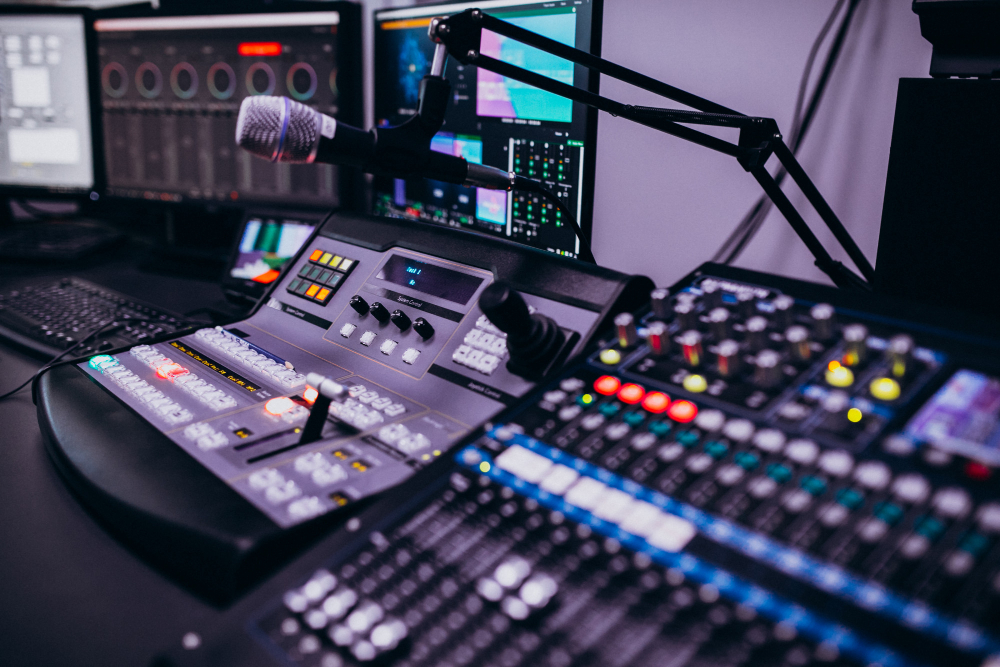What are DAWs and How to Use for Music Composition?
Many might not know that Billie Eilish’s Grammy-winning album When We All Fall Asleep, Where Do We Go? was produced entirely on a DAW without a high-end studio setup!
But what exactly is a DAW, and what is its role in music composition? Let us simplify the term for you in this blog.
Digital Audio Workstation is the new music studio on the go, through which you can create your composition, and with mastery over the tool, you can release it professionally as well.
So, are you still holding onto that rough melody you recorded on your phone? With a DAW, you can refine, layer, and polish it.
Do you want free career counseling?
Ignite Your Ambitions- Seize the Opportunity for a Free Career Counseling Session.
- 30+ Years in Education
- 250+ Faculties
- 30K+ Alumni Network
- 10th in World Ranking
- 1000+ Celebrity
- 120+ Countries Students Enrolled
However, with so many DAWs out there, each packed with endless features, it is quite common to feel lost before you even begin. In this guide, we have broken down everything you need to know about DAWs to start composing your own music.
What is a DAW?
A DAW (Digital Audio Workstation) is a software tool that allows users to compose, record, edit, and produce music at a professional level, all from a laptop! A DAW provides everything you need to bring your musical ideas to life, be it electronic beats, composing a film score, or even recording vocals.
Read Also: Professional Courses After 12th Arts: Top Options, Eligibility, and Career
Book Now →
The flexibility of a DAW is another of its USP! Gone are the days when you needed expensive studios or bulky equipment to make music. With DAW, you can just use your laptop and headphones to start composing anywhere, anytime. Therefore, DAWs are widely used across the music industry, from independent artists to top-tier professionals.
Why do Composers need a DAW?
Before the emergence of digital platforms and tools, music production was limited to expensive studios, so let us decipher why composers need a DAW in the first place.
- All-in-one Music Production Studio
You can view DAW as a complete music studio in the form of software, as everything from recording instruments and vocals to mixing, mastering, and sound design can be done within it.
Do you want free career counseling?
Ignite Your Ambitions- Seize the Opportunity for a Free Career Counseling Session.- Creative Control
A DAW gives you limitless creative freedom over every element of your track, as you can layer multiple sounds, experiment with endless effects like reverb, delay, and distortion while tweaking individual notes and sounds to perfection.
- Access to Virtual Instrument & Sound Library
Most modern pop and electronic tracks use premade loops and samples available in DAWs. The access to virtual instruments and sample libraries will allow you to play realistic instrument sounds without owning one through virtual pianos and guitars.
- Professional-Grade Mixing & Mastering Tools
DAWs come with mixing and mastering features that will let you fine-tune your track until it sounds polished and professional.
- EQ & Compression – Balance frequencies and make instruments stand out.
- Reverb & Delay – Add depth and space to your sounds.
- Auto-Tune & Vocal Processing – Fix off-key vocals or create robotic effects.
- Plugins – Make your track loud and crisp, ready for streaming platforms
Read Also: Why Music Theory is Essential for Every Aspiring Musician
How to Choose the Right DAW
As by now you have gotten a fair understanding of what DAW is, let us decipher how you can choose one for yourself, depending on your needs.
| DAW | Best For | Justification |
| FL Studio | EDM, Hip-Hop, Trap | Easy-to-use interface, great for beat making. (Ideal for beginners) |
| Ableton Live | Live performances, Loops | Best for electronic music and DJing. |
| Logic Pro X | Professional production | Great for film scoring and vocal processing. |
| Pro Tools | Studio recording, Mixing | Ideal for recording live instruments. |
| Reaper | Budget-friendly production | Affordable and lightweight |
| GarageBand | Beginners, Apple users | Free and easy to learn for Mac users (Ideal for beginners) |
How to use DAWs for Music Composition?
Read Also: How to Balance Music Studies with Your Daily Life: Time Management Tips
Step 1: Select & Set up the DAW
Before composing, identify the software that best aligns with your goals, and ensure your DAW is properly configured to avoid technical issues. Download the latest version of your DAW for smooth functionality, and set it to 44.1 kHz or 48 kHz for high-quality audio output.
Step 2: Understand the DAW Interface
Explore the DAW software to learn its interface, particularly the basics of recording, editing, and mixing.
Step 3: Create a Composition
We can simplify the composition procedure by categorizing it into 4 sections:
- Start with a melody
- Add Chords
- Add Drum Beats and explore sample libraries
- Layer with Bass and effects
Step 4: Mix & Master
This would generally be the last step, wherein you will need to mix and master the audio to optimize it for a variety of platforms, adding a professional touch.
Common Mistakes to Avoid While Using DAW
- Do not complicate your first track
- Refrain from ignoring mixing & mastering
- Avoid using too many plugins
Traditional Studio vs. DAW
As a beginner, you should first focus on building your skills and try to minimize the expenditure through a DAW, as it is a comprehensive suite that can produce compositions just on the same level as a professional music studio.
| Studio Setup | DAW |
| High-End Microphone | Virtual mic processing |
| Hardware Synthesizers | Built-in synths in DAWs |
| Mixing & Mastering Gear | Digital plugins |
Is Formal Education Necessary for Music Composers?
Is formal training essential for a career in music? You might have asked yourself this question, especially since music is often seen as an art that flows naturally. Some legends, like A.R. Rahman, honed their craft through formal education, while others, like Vishal Mishra, carved their path without it. So, does that mean formal education is optional?
The truth is, whether or not they had formal training, every successful composer has built extensive knowledge and practical experience through years of dedication and practice.
Read Also: India’s Top 10 Legendary Music Composers You Should Know
So, does this mean you can become a successful composer without formal training? Yes.
But does it mean formal education has no value? Absolutely not.
A structured learning environment can accelerate your journey, helping you grasp music theory, sound engineering, and production techniques much faster than self-learning.
| Music Theory and Structure | Formal education in music will help you comprehend the theory of music and the correlated structure to better immerse yourself within the subject |
| Skill Development | Accessing resources like recording studios, tools, and industry mentorships |
So, instead of choosing one over the other, a hybrid approach is often the best way forward.
- Start exploring music composition on your own, and try out DAWs like FL Studio or Ableton.
- Consider enrolling in music courses, as these will provide structured guidance for you to navigate the intricacies of the industry.
- Stay updated with industry trends, follow music blogs, attend workshops, and experiment with new techniques.
- Engage in real-world projects, seek out opportunities to collaborate with indie artists, and start remixing.
Conclusion
If you want to create your melodies, mastering Digital Audio Workstations (DAWs) is an essential step, which will help you materialize your dream of becoming a music producer, sound engineer, or even a composer. While many artists are self-taught, enrolling in a structured music production course or sound engineering course can fast-track your learning by giving you hands-on experience with industry-standard tools and techniques.
Read Also: Top 10 DJs in India Revolutionizing the Music Industry in 2025
That is why choosing the right music academy is crucial. A well-structured program can equip you with the necessary skills. At AAFT’s School of Music, students gain practical exposure through music production classes, sound design courses, and music engineering courses. With access to state-of-the-art recording studios, 16-channel mixers, and industry-leading software like FL Studio, Logic, and Pro Tools, you can refine your craft in a professional setting.
Regardless of whether you are a beginner or aiming for advanced proficiency, investing in the right education can set the foundation for a successful career in music. So, explore your options, choose a program that aligns with your goals, and take your first step toward creating music that resonates with the world!
Explore AAFT to learn music production, develop industry-ready skills, and connect with professionals.

AAFT has been providing the world with limitless creativity and expression since 1993! Through a dynamic and industry-driven curriculum, AAFT provides engaging and captivating articles to persuasive blogs and empowers its readers to explore diverse avenues of creative media education-related content.






